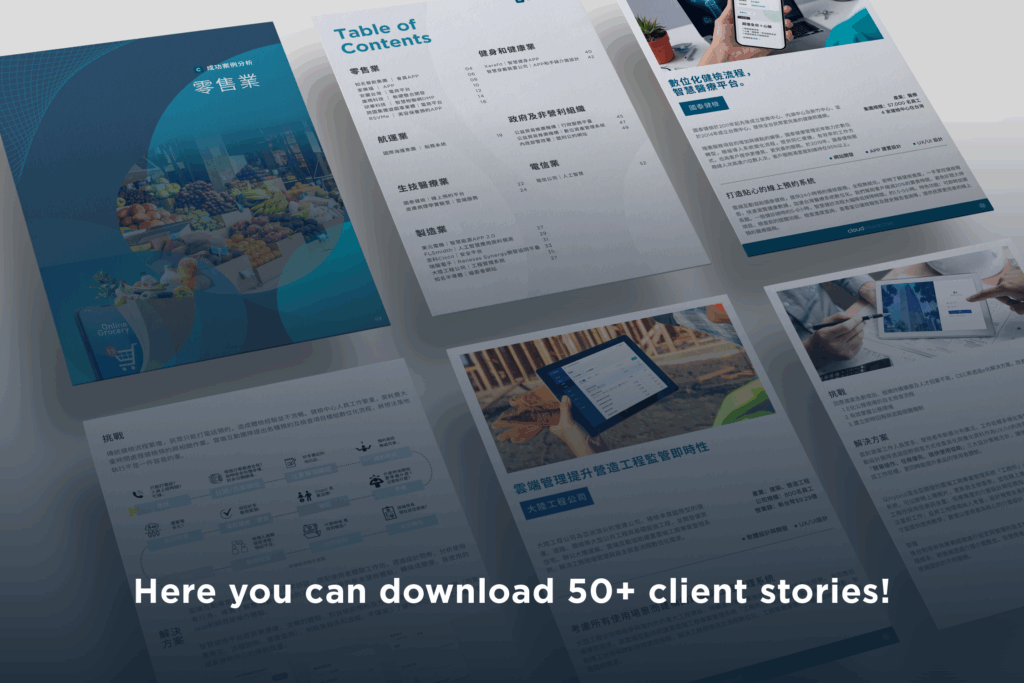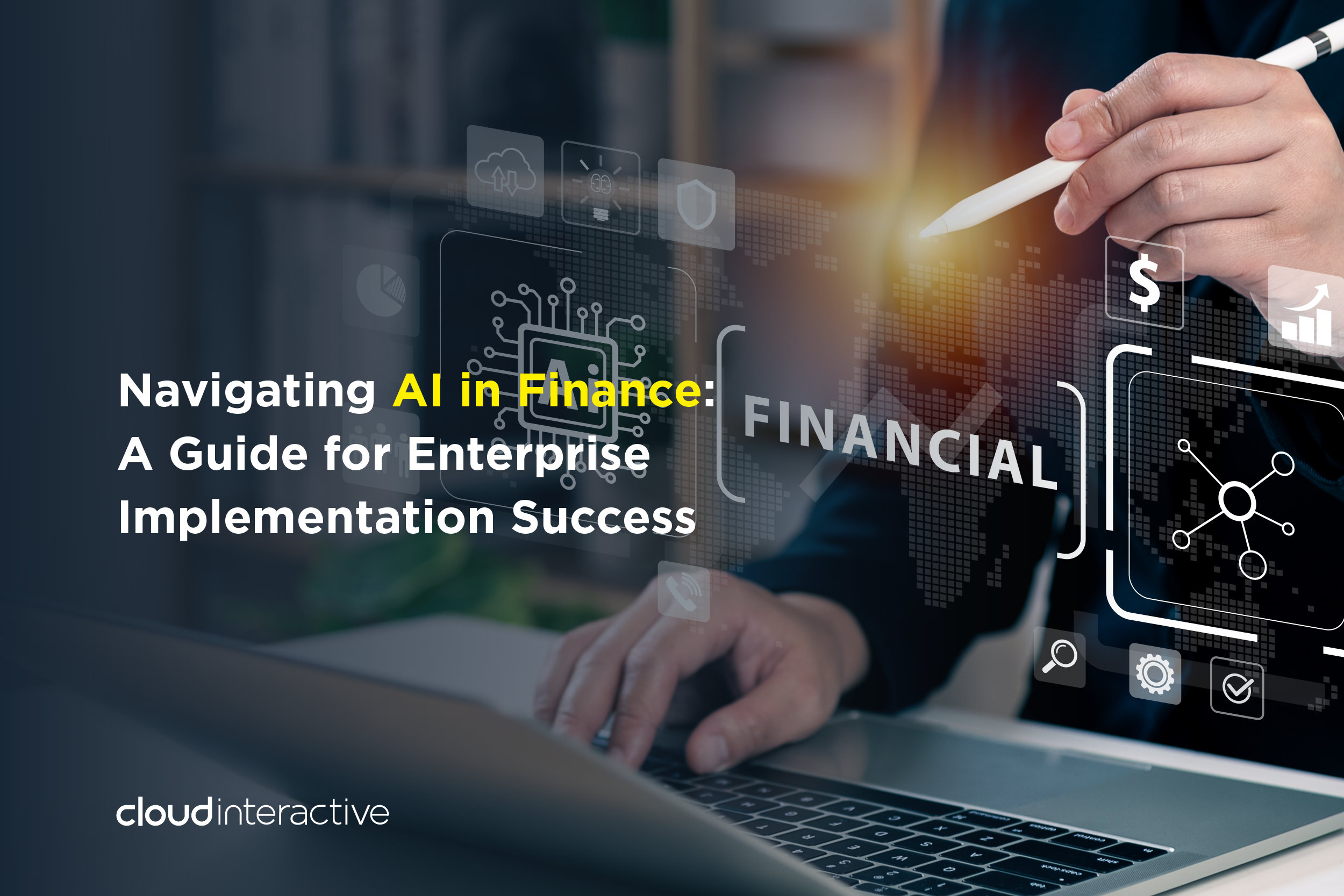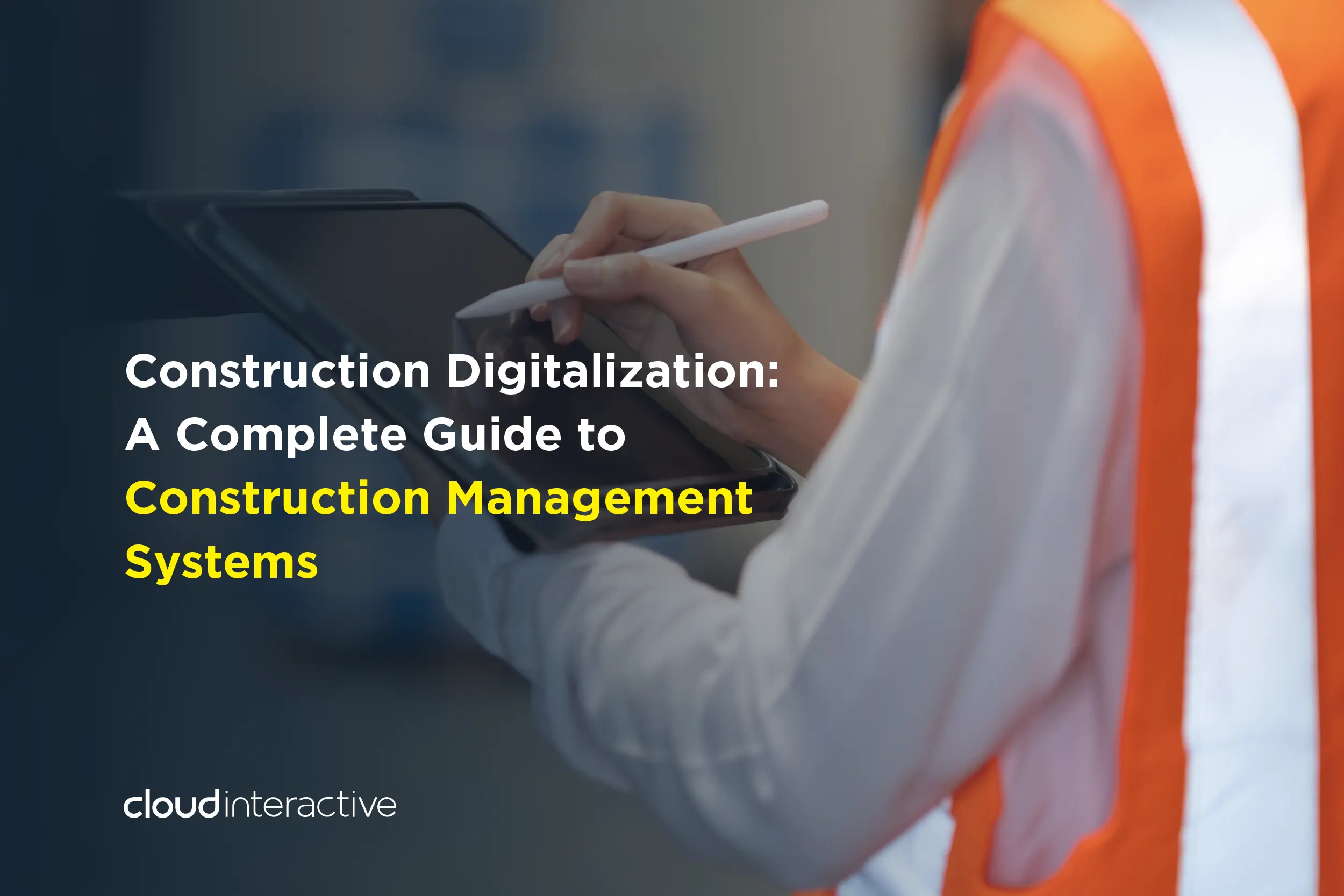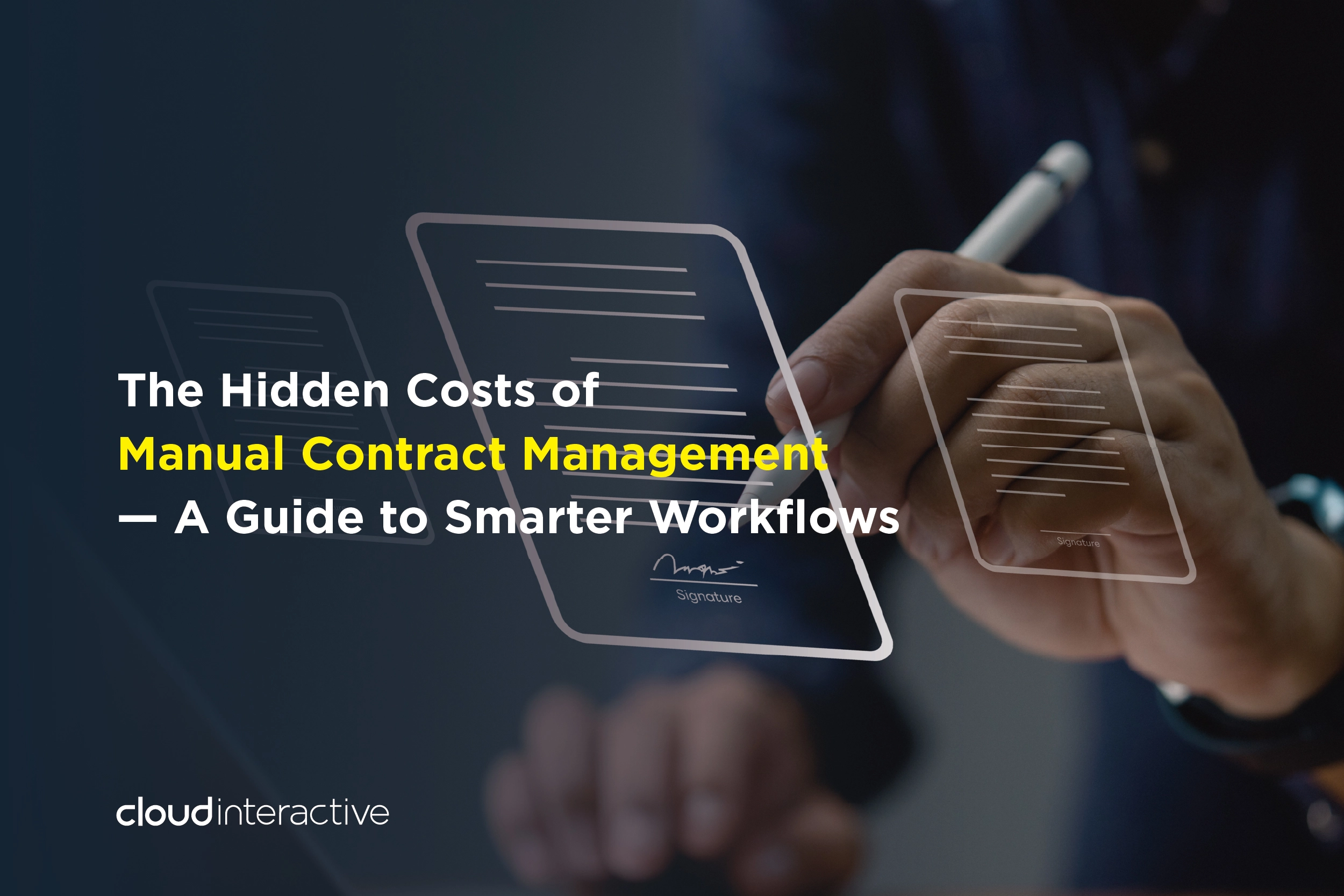
Finding the Right Fit: How to Choose a Software Development Partner
Choosing the right software development partner is a pivotal decision for a business as it grows. As digital transformation accelerates, enterprises of all sizes rely on external expertise to innovate, scale, and stay competitive. The right partner can mean the difference between rapid growth and costly setbacks, making a strategic approach to selection more important than ever.
What is a Software Development Partner?
Who Needs a Software Development Partner?
Building and maintaining in-house software solutions can be resource-intensive, especially as technology requirements become more complex. A software development partner can provide the technical expertise, scalability, and support businesses need to stay focused on their core operations while meeting development goals efficiently. Organizations at different stages benefit from working with a development partner:
(1) Startups
Startups often operate with limited technical resources and tight deadlines. A software development outsourcing partner offers access to experienced engineers and industry expertise. This allows startups to bring products to market faster, resolve technical issues efficiently, and avoid the overhead of building an in-house team too early.
(2) Small and Medium-Sized Enterprises (SMEs)
As SMEs grow, so do their technical needs. A reliable outsourcing partner can provide scalable development support, integrate with existing systems, and manage ongoing maintenance. This enables SMEs to keep pace with business growth without diverting focus from their core operations.
(3) Enterprises
Larger organizations require secure, compliant, and maintainable systems. A development partner with enterprise experience can help navigate regulatory requirements, manage complex architectures, and ensure long-term platform stability and support.
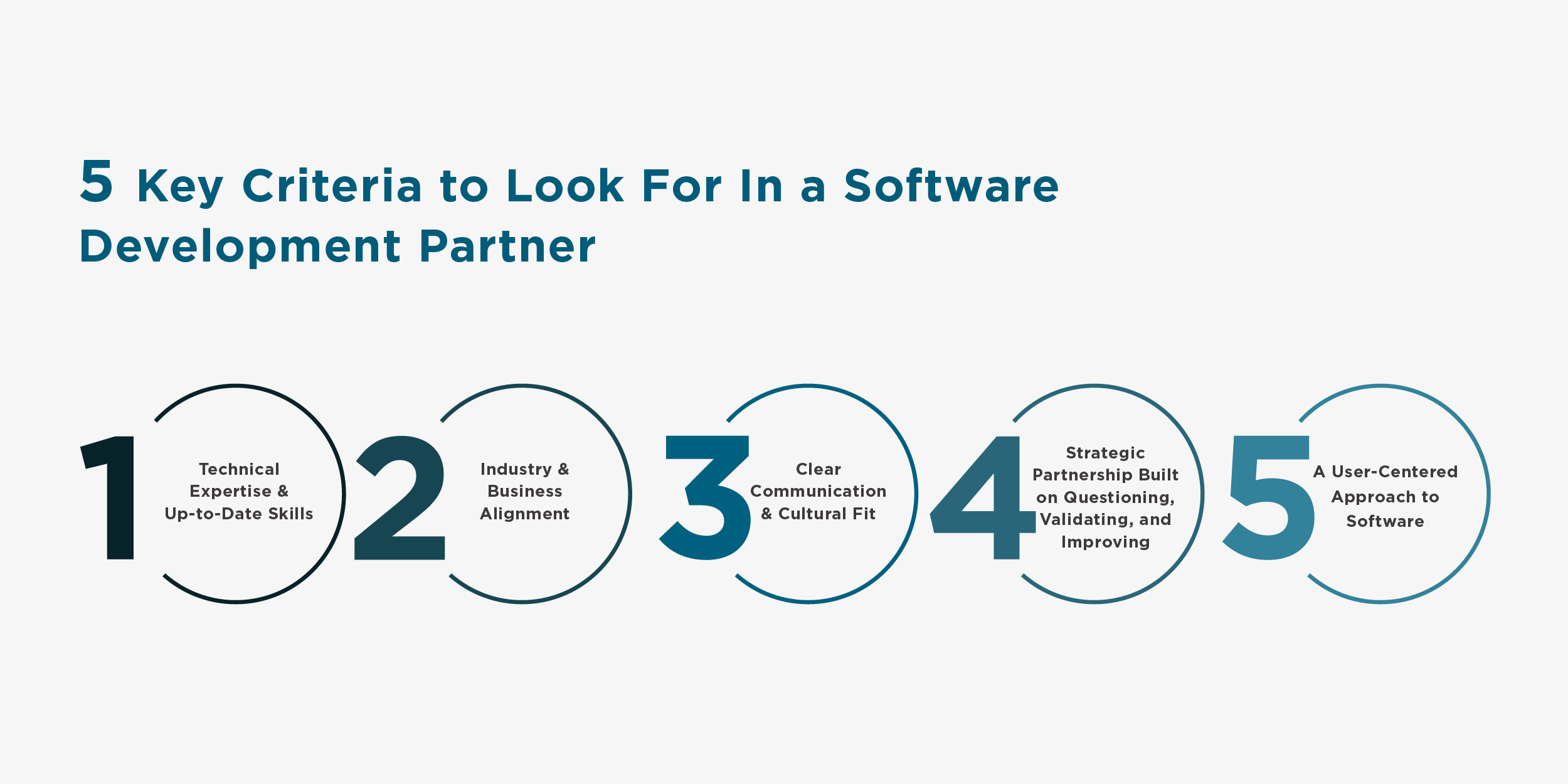
Key Criteria to Look For In a Software Development Partner
(1) Technical Expertise & Up-to-Date Skills
Technical expertise is more than a checklist item; it is the foundation of your success. The right development partner doesn’t just write code. They anticipate challenges before they become blockers. They choose the right architecture today, so you won’t have to rebuild it tomorrow.
They bring experience in solving problems under pressure, and best practices such as DevOps and SRE to ensure your system’s on-time delivery and reliability.
What we bring
From AI and data science to UI/UX design, system integration, and resilient IT infrastructure, we’ve helped businesses reach this level of confidence through services that span the full development lifecycle. Our team brings technical depth and a proactive mindset, delivering more innovative solutions, faster deployments, and long-term stability.
(2) Industry & Business Alignment
Industry knowledge is essential. A software development outsourcing partner with experience in your sector can offer far more than technical skills; they bring relevant context, compliance awareness, and faster decision-making from day one.
Take healthcare, for example. A team familiar with HIPAA requirements can build compliant systems without the need for constant back-and-forth. In finance, understanding security protocols and regulatory standards helps avoid costly delays. The same goes for retail, logistics, and other fast-moving sectors where domain knowledge shapes better solutions.
What we bring
At Cloud Interactive, we’ve partnered with leading enterprises across industries like healthcare, finance, manufacturing, retail, logistics, and telecommunications. This breadth of experience allows us to step in with a working knowledge of your industry’s challenges, whether it’s building HIPAA-compliant patient portals, implementing robust security measures for banking platforms, or optimizing supply chain visibility in logistics.
(3) Clear Communication & Cultural Fit
Speaking the same language doesn’t guarantee cultural fit. True alignment goes beyond vocabulary – it’s about whether your partner’s communication style, values, and responsiveness match yours. Their project managers should not only understand your goals but also be able to translate them into actionable plans, proactively clarify assumptions, and keep all stakeholders in sync.
Just as importantly, senior engineers must be comfortable communicating with non-technical audiences. There will be moments when they need to explain system decisions, justify timelines, or present trade-offs to managers or C-suite leaders. If they can’t bridge the technical-business gap, misunderstandings and misalignment will follow, no matter how good the code is.
Your software development outsourcing partner should have structured ways to keep you informed and aligned throughout the project, such as regular updates, clear documentation, and project management tools like Jira, Trello, or Asana.
What we bring
Founded in San Francisco and relocated to Taiwan in 2010, Cloud Interactive maintains a U.S. office culture that emphasizes transparency, accountability, and proactive problem-solving. All of our client-facing team members are native English speakers, ensuring easy and direct communication. Our design and development processes reflect U.S. standards in usability, product thinking, and delivery rhythm, ensuring smoother interactions, faster alignment, and a working relationship that feels like an extension of your team.
(4) Strategic Partnership Built on Questioning, Validating, and Improving
A great software development partner tests your ideas before execution. The right partner acts as a strategic extension of your internal team, asking tough questions, identifying blind spots, and validating assumptions before they become costly missteps.
Too often, projects run into trouble not because the code is incorrect, but because no one has challenged the underlying thinking behind it. Assumptions about user needs, technical constraints, or timelines can quietly derail even the most promising plans. A reliable partner will stress-test your product vision early, offering informed perspectives based on hands-on experience across various industries and technologies.
What we bring
Our teams engage critically with every brief, whether that means questioning the scalability of a chosen framework, suggesting alternative architectures, or refining feature priorities based on their impact on users. Through ongoing reviews, user feedback loops, and agile iterations, we continuously assess progress and adjust our direction as needed.
(5) A User-Centered Approach to Software
A software solution is only as valuable as its usability. When evaluating a software development partner, ask: Do they consider your users, study your workflows, and design with real-world application in mind, or are they just building features for the sake of building?
What we bring
At Cloud Interactive, our in-house UI/UX team brings deep expertise in designing intuitive, user-friendly digital experiences across industries. We go beyond surface-level design by conducting focus groups, user interviews, and usability testing to truly understand your audience’s needs and behaviors. Through our design thinking workshops, we align stakeholders, surface critical user pain points, and co-create solutions that solve real business problems. This collaborative, research-driven approach ensures we’re not just delivering features – we’re crafting experiences that people actually want to use.
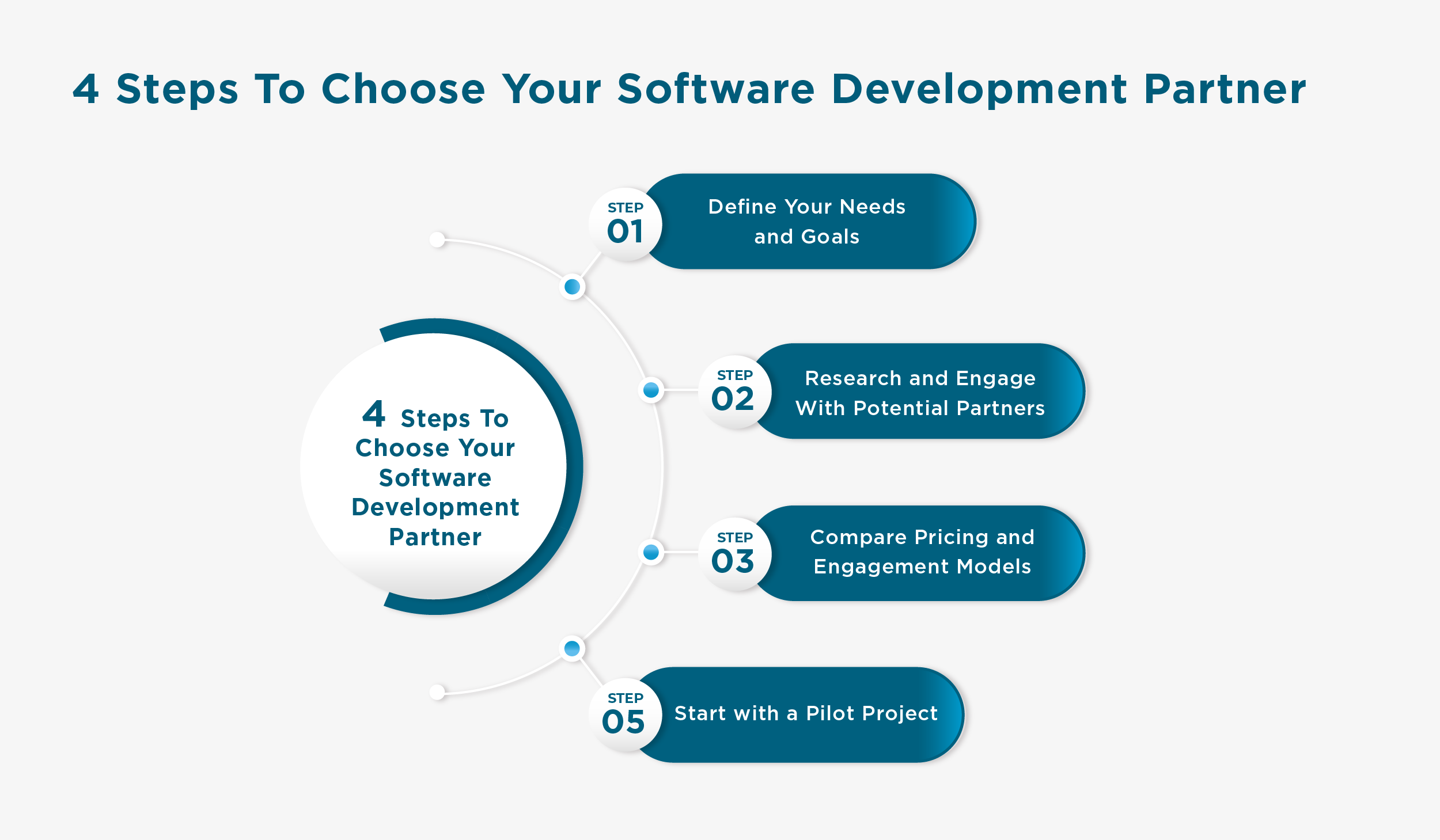
How to Choose Your Software Development Partner
Step 1: Define Your Needs and Goals
Before choosing a software partner, the first and most important step is clarifying what you want to achieve. Clearly defining your goals, understanding your users, identifying core features, and outlining expected outcomes will guide every decision that follows. This includes your budget, timeline, technology choices, and team setup.
You don’t need to have every detail figured out at the start. If the scope is unclear, look for a partner who can offer strategic guidance. The right team will help you set priorities, recommend suitable budgets and delivery models, and turn initial ideas into a clear and actionable plan. This kind of collaboration ensures you are not just building software, but building the right solution from the beginning.
Step 2: Research and Engage With Potential Partners
Once you’ve defined your goals, start researching software development partners that align with your industry, project size, and technology needs. Look into their portfolio, client testimonials, and case studies to see if they’ve solved similar problems and delivered tangible results. But research alone isn’t enough.
Take the next step by engaging with your shortlisted partners. Set up discovery calls to discuss your vision, ask about their approach, and get a feel for how they communicate and collaborate. These conversations are just as meaningful as credentials. They’ll reveal whether your values, expectations, and working styles align. A trustworthy software development outsourcing partner will actively listen, ask smart questions, and offer ideas – not just sell you services. This early interaction sets the tone for the entire relationship.
Step 3: Compare Pricing and Engagement Models
Selecting the right pricing model is critical as it directly influences risk allocation, cost control, and project flexibility. Fixed-price contracts shift risk to the vendor but often include a 15–20% cost buffer to cover unforeseen changes, making them less adaptable for evolving needs.
On the other hand, Time & Materials (T&M) models offer greater transparency and flexibility, which are ideal for iterative development. Still, they demand disciplined project governance to prevent scope creep and keep budgets on track. A hybrid approach can offer the best of both worlds for complex or long-term projects, using fixed pricing for clearly defined core features and T&M for evolving components.
As you compare proposals, don’t just look at the bottom line. Ask what’s included, how change requests are handled, and whether post-launch support or maintenance is covered. A lower price may come with hidden trade-offs like limited involvement, offshore communication issues, or a lack of senior talent. The right software development partner will recommend a model that aligns with your goals, not just their convenience, and explain how they manage budget, timeline, and quality throughout the engagement.
Step 4: Start with a Pilot Project
Before committing to a long-term engagement, start with a pilot project to evaluate a potential software development partner’s capabilities. This small-scale assignment allows you to practically assess their technical skills, communication style, and problem-solving approach.
Ask for code samples or GitHub links to review their code quality, and ensure they have hands-on experience with the technologies your project requires. Look for teams that follow modern development practices like Agile and CI/CD, and prioritize testing, security, and performance.
Software Development Outsourcing Engagement Models
Choosing the right collaboration model is just as important as choosing the right software development partner. It shapes how you work together, how quickly you can move, and how well the final product aligns with your goals. Here’s a breakdown of the most common engagement models to help you decide which one best fits your project needs, budget, and long-term vision.| Model | Description | Key Benefits |
| Onshore Outsourcing | Partner in your home country | Easy communication, cultural fit |
| Offshore Outsourcing | Partner in a distant country | Cost savings, access to global talent |
| Nearshore Outsourcing | Partner in a nearby country | Balance of cost and convenience |
| Dedicated Team | Team works exclusively on your projects | Deep integration, long-term focus |
| Project-Based | Engagement for a specific project | Flexibility, clear scope |
| Hybrid | Mix of models above | Customizable, scalable |
A Real-World Case Study
A Fintech Startup in Singapore|Staff Augmentation Helps Scale Smart and Fast
A great example of how we deliver real value through staff augmentation is our partnership with a Singapore-based fintech startup. At an early stage in their growth, the company faced significant challenges, including tight budgets and an urgent need for engineering talent to develop their bond trading platform. By collaborating with Cloud Interactive, they were able to quickly access skilled software developers and project management support without the high costs of full-time hires. This approach enabled them to move quickly while maintaining lean and focused operations. Our remote team became an extension of their internal capabilities, contributing technical expertise and helping them hit key milestones with precision. Within just one week, we onboarded a tailored team that worked on critical development tasks, accelerating time-to-market and reducing overhead. The result was not only smoother operations and lower hiring costs, but also long-term collaboration that continues to support their evolving business needs.Common Mistakes to Avoid
(1) Unclear Expectations and Deliverables
The lack of clarity is one of the most common mistakes that causes scope creep, delays, and frustration on both sides. When expectations are vague and deliverables aren’t outlined from the beginning, it’s easy for misalignment to occur. To avoid this, establish a detailed scope of work, realistic timelines, and measurable deliverables right from the start.
(2) Ignoring Legal and IP Safeguards
Ensuring your legal and intellectual property (IP) bases are covered is a critical step in partnerships. Failing to conduct a thorough legal review of contracts can open the door to costly ownership disputes in the future. It’s essential to clearly define who owns the resulting software, how IP will be handled, and what confidentiality standards will apply. Taking the time to set these terms upfront protects both you and your partner, helping to avoid misunderstandings that can derail the project later.
(3) Neglecting UX and End-User Needs
Software that looks good on a spec sheet but feels clunky or confusing in practice will struggle with user adoption, no matter how well it’s engineered. If you or your software development outsourcing partner is not conducting user research, prototyping, or validating workflows through feedback loops, you’re likely building from assumptions – and that’s a gamble.
Many face costly rework, support headaches, and a product that fails to deliver business impact. Look for a partner with dedicated UI/UX capabilities, a user-centered approach, and a proven track record of designing solutions that people actually enjoy using.
(4) Choosing Based on Cost Alone
While it’s tempting to opt for the lowest-priced option, selecting a software development outsourcing partner solely based on cost can backfire. The cheapest provider may lack the necessary expertise, offer limited scalability, or fall short in communication. A better approach is to weigh price alongside value, ensuring your partner can grow with your needs and maintain a high standard of collaboration.
Final Words|Choose Smart, Partner Strong
Choosing the right software development partner is more than just ticking boxes; it’s about finding a team that aligns with your vision, accelerates innovation, and delivers real results. From evaluating technical capabilities to assessing cultural fit and industry expertise, a thoughtful, strategic approach ensures you avoid common pitfalls and set your business up for scalable, long-term success.
Why Cloud Interactive Could Be Your Ideal Partner
Our streamlined delivery process combines the strengths of our UX/UI designers, software engineers, and DevOps experts to bring your product to market faster and more efficiently. We lead with a user-centric mindset, ensuring that every solution we build is intuitive, scalable, and aligned with real business needs. More than just consultants, we act as true strategic partners — driving innovation, solving complex challenges, and helping your business grow through technology.
By Cloud Interactive
Meet the masterminds behind the curtain at Cloud Interactive. We're not just software developers - we're also a content crew fuelled by caffeine and a thirst for knowledge. We translate tech jargon into plain English, dissect industry trends, and craft helpful tips that are informative and engaging. So, buckle up and join us on a journey through the ever-evolving and exciting world of technology!
